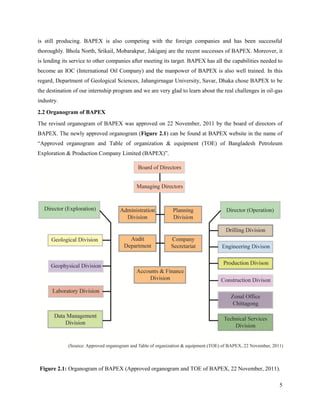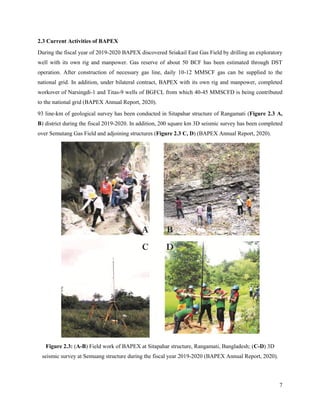This document provides an overview of the Bangladesh Petroleum Exploration and Production Company Limited (BAPEX). It describes BAPEX's role in petroleum exploration and production in Bangladesh. It outlines BAPEX's key divisions and departments related to geology, geophysics, drilling, and laboratories. It also briefly discusses BAPEX's current gas field operations and production, seismic and drilling facilities, processing units, and laboratory capabilities. The purpose of the internship discussed in the document is to provide students experience in the practical functions and workflows of an exploration and production company like BAPEX.



































































